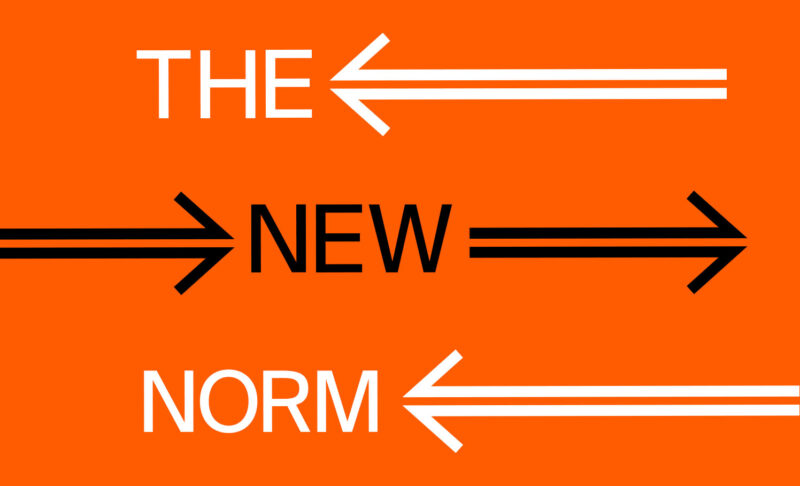Related Services
Credits
Writer: Dejan Kvrgic

Think about any of the world-renowned companies – the giants of the industry, like Coca-Cola, Starbucks, Google, or Apple – and what makes them stand out.
It’s never just the product. It’s the brand.
It doesn’t matter how big – or small – your company is; starting the branding process in the early stages is essential. But it’s often hard to figure out how much priority to place on logo and branding when starting a company.
To help you decide what’s best for your business, we’ll discuss the vital role of branding and outline the approach and the components to help you kick off your brand strategy. And more importantly, make it effective from day one.
The Importance Of Branding In The Early Stages Of Starting A Business
Starting a business in a world of fierce competition means that relying too heavily on products alone is no longer a viable option. It’s simply not enough to make you stand out – and it could eventually leave you in the dust. Developing and establishing your brand – along with adopting the right marketing and social media strategies – will be the critical groundwork for customer loyalty and retention. And it will ultimately give you a competitive advantage, too.
Don’t get us wrong; high-quality products are still as important as ever. However, brand loyalty and customer perception drive purchases, meaning branding has become a far better indicator of success – even more potent than actual feature differentiation.
Rather than jump ahead and start pouring all your resources and money into marketing your products, allocate a portion of your resources into developing your brand strategy first. Branding will be one of your company’s most valuable assets – and we’ve outlined several reasons why below.
Brand Recognition Generates Revenue
The role of emotion in consumer behavior shouldn’t be overlooked. A growing number of consumers make purchasing decisions based on subjective feelings and attitudes towards a business. That’s why the trust and connection that has been previously established could positively impact your bottom line.
When consumers recognize your brand among others on the market, they are more likely to make a purchase decision in your favor.
Branding Builds Awareness & Puts You Ahead Of Competition
Getting your foot in the door is among the most challenging aspects of launching a business. With businesses vying for consumers’ attention in the age of information overload, branding will give you an edge over your competitors through visibility and instant recognition. In that sense, awareness about your brand is the necessary first step in the process – one that makes it easier to reach potential customers and drive growth.
Increasing sales is the goal, and raising awareness through branding is the route.
Branding makes you – your brand name, products, or professional services – memorable and distinguishable from the competition. And strong recognition of your brand is vital for success because, to put it simply, customers trust brands they recognize.
Consistency in the elements of the brand’s identity, including logos, colors, fonts, messaging, and tone of voice, is what creates a cohesive, unified experience across all channels and touchpoints. And the more consistent you are with it, the more recognizable you will be.
Your Brand Reinforces Trust & Builds Loyalty
Use the initial connection you’ve established with your audience to fuel your marketing efforts and reaffirm the value attached to your business name at every stage of the customer’s journey. Think about it from the customer’s perspective:
You’ll feel more connected with people you can identify with – and the same is true for brands. When you, as a customer, feel like a brand “gets” you and is consistent in their actions, you’re more likely to buy their products or services.
A strong brand is a promise to customers. Your customers will come to trust that, when you make commitments, there’s something behind them. That builds and reinforces loyalty – which will prove to be one of your most significant assets.
Your Brand As A Source Of Pride & Inspiration
People are emotional about brands. It goes beyond liking a specific product; brands carry expectations and experiences that hold inherent, emotional value for the customers.
That’s why choosing one brand over the other is, for many, a means of self-expression – and every purchase is a conscious statement about the customer’s identity and lifestyle.
Apple people vs. Android people would be the perfect example of how brand choice can signal personal identity. The same aspects of your brand that inspire loyalty in customers should be a source of motivation for everyone else – including your staff.
“This is what our brand is all about.”
It’s not just something you should tell your audience; make sure your employees know and feel it, too. With the whys in mind, let’s dig into the hows of forming a memorable brand.
What Is Brand Identity System
A brand’s identity system is a collection that encompasses different visual devices and elements that work together to visualise and communicate a brand. The logo is the core of that system – but other components, like visual brand extensions and the brand’s tone and message, can be just as crucial for creating unified and consistent brand assets.
Logo Design
Compelling logos need to be memorable but straightforward – and act as a part of a more extensive visual system. The color palette, fonts, image, tones – all that is determined by the story your brand is trying to tell to prospective customers. And the logo you create, as the single image consumers will associate with your brand, should set the stage for this story.
You can translate these elements to other branding materials – landing pages, business cards, internal documents, promotional T-shirts, and advertising – to create an easily recognizable identity for your small business.
Brand Message
Your brand message and tone of voice should reflect what you do and what you believe in – and speak directly to the immediate needs and wants of your target audience. It would be best if you aimed to create a brand message that answers three crucial questions:
• What your business does
• What the brand stands for
• Why the business matters
Make sure your brand voice sounds the same everywhere – with slight tweaks depending on the social media channels, of course – and speaks to your target audience.
Defining Your Brand Identity Early On
Defining your brand will be a journey of self-discovery for your company. Yes, it will be challenging, time-consuming, and, at times, even troublesome – but it will ultimately give you a shot at surviving and thriving in the age of “digital Darwinism.” The one piece of advice we can give you is to approach and treat your brand as a person that has an identity, a personality, and an experience.
You can start building your brand’s identity by answering the following questions:
• What’s your story?
• What is your company’s mission?
• What pain points do your products or services solve?
• What kind of value proposition do you offer?
• What is your target market?
• Who is your ideal customer?
• What are some qualities you want others to associate with your company?
• What is your point of difference?
• Who are your main competitors?
Keep in mind that branding is an iterative process. Don’t expect to have all the information and ideas sorted out straight away; you’ll be back to the drawing board more times than you think. Once you’ve defined your brand and personality, start thinking about how you want your brand to be seen and what messages you want to communicate. That will help guide the next steps in your strategy as you continue working on other visual assets representing you as a brand.
Elements Of Successful Digital Branding
Start with a brand style guide, or the so-called “brand book” – a set of guidelines that outline the brand’s mission, core values, and visual identity. It will act as a DNA blueprint containing layers of strategic “rules,” defining all aspects of your brand and keeping things structured. As a rule of thumb, your brand book should include the following:
• Mission statement
• Company’s vision, core values, and beliefs
• Brand logo and its variations
• Color palette
• Typography
• Brand voice and language
• Buyer persona
It’s not an exhaustive list – but it provides you with a framework that will help keep everyone on the same page, ensuring consistency and cohesion throughout all aspects of the business. Once all these core elements are determined, there’s far less room for confusion, making it possible to deliver a unified message that’s always on-brand.
Website & Social Platforms
If you think about your logo as the sign for your business, then the website will be the digital version of your storefront location. For starters, make sure that every element – be it a link, an image, or a button – works. Next, make it simple and easy to navigate. And lastly, maintain brand consistency throughout.
Also, don’t forget about your social media presence as part of digital branding. If your target audience is there, then your brand should be, too.
SEO
Without effective search engine optimization (SEO), most of your digital marketing and brand-related efforts will go down the drain. Given that search engines will be one of your primary sources of website traffic, you want to make yourself easy to find. And that means building your website with SEO in mind.
Ready, Set – Brand
Regarding how much priority to place on your logo and branding, we’d say it should be at the top of your to-do list.
Your company name, a clever tagline, the perfect logo, and an optimized website landing page are all tangible branding elements. It’s easy to think that it’s all about the stunning visuals, but as we pointed out already, powerful branding isn’t – and should never be – skin-deep.
It goes deeper than that: Each aspect of your brand serves as a chapter of your company’s story and gives you an identity beyond just your business name.
If this sounds a bit intimidating for your small business right now, don’t hesitate to get in touch! From your logo and web design to social media and marketing, we can help you create an online presence that will represent your values and resonate with your potential customers.

